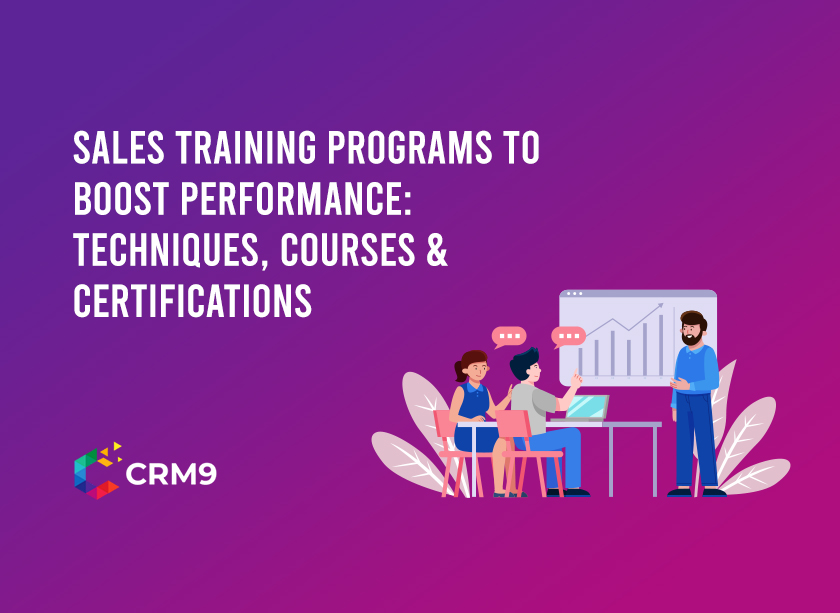How businesses sell has significantly changed over the past few years. Instead of relying on face-to-face meetings and heavy travel schedules, many companies are succeeding with inside sales. Through this method, sales forces can reach prospects anywhere by way of phone calls and electronic means, yet still form authentic relationships.
What makes inside sales unique is that it is both effective and flexible. Additionally, it enables salespeople to hold more meetings, understand customers, and formulate the right strategy. Inside sales is one of the most effective means of generating revenue with great customer relationships in the present technology-driven, high-speed economy.
What is Inside Sales?
Selling goods or services remotely or from within an office rather than in person is known as inside sales. What is inside sales can be described as the art of doing business with clients over the phone, email, or video conference rather than face-to-face. The inside sales meaning emphasizes how the practice is efficient and scalable because salespeople can reach more prospects in a shorter time. This method tracks contacts and follows up on leads using technology, such as CRM software. It is a budget-friendly, technologically advanced way to sell that enables agents to connect with a large number of potential clients without having to travel.
Inside Sales Job Responsibilities: What Do They Include?
Job responsibilities in inside sales are not limited to selling but they involve all that a sales team requires to make a deal and without ever seeing a customer in face-to-face context. Inside sales operates on the digital communication, smart CRM tools, and properly organized processes and ensures the sales flow without interruptions.
Some of the key inside sales executive roles and responsibilities include:
1. Prospecting and Lead Generation
The initial step is to fill the sales pipeline- conducting research, identifying, and qualifying leads via calls, emails, and online environment. The other sales cycle becomes slow without good prospecting.
2. Nurturing Relationships
Inside sales is not about selling but rather listening and delivering value. Creating authentic trust helps maintain interest and receptiveness of the prospects to further dialogue.
3. Sales Negotiation
Objections are natural and the way you deal with them determines success. Being empathetic in negotiation and developing solutions that meet the needs of the clients demonstrates to them that you are interested in them, not just selling them.
4. Pipeline Management
An effective CRM is your good friend. It maintains records of deals, monitors performance and does not leave any deal behind.
5. Product Demonstrations
Virtual demos are your chance to shine — they must address customer pain points, not just showcase features. A good demo feels like a solution, not a sales pitch.
6. Closing Deals
Closing isn’t just about getting a signature — it’s about ensuring a smooth transition for the customer. Clear communication here sets the tone for long-term success.
What are the Inside Sales Roles and Responsibilities?
1. Generating Leads
Recruiting new leads and walking them through the sales pipeline are the duties of an inside sales representative. To develop a database of prospective contacts, they may utilize social media, do online research on potential customers, or follow up on website enquiries. By adding qualified leads to the pipeline, the rep makes sure that the team has plenty of potential customers to engage. The majority of inside sales positions heavily rely on prospecting.
2. Negotiating Deals
Effectively negotiating terms and prices is among the main inside sales job responsibilities. An inside sales specialist attempts to negotiate terms and prices after interest has been generated. They address any issues and talk about options using their product expertise and clear communication. To make the client and the company happy, this can mean changing the contract terms, offering rebates, or bundling services.
3. Closing Sales
Converting a prospect into a customer is the last phase. One of the inside sales executive roles and responsibilities is to oversee the closing process by obtaining approvals and preparing any necessary paperwork. They frequently assist the client with the last questions and send out official contracts or quotes. Effective closing entails diligently following up until the sale is finalised and the customer signs on.
4. Conducting Sales Presentations
Product presentations and demonstrations are frequently conducted remotely by inside sales teams. They may arrange a video demonstration to demonstrate a product’s functionality or use screen sharing to offer a personalised solution. These presentations need to be engaging and appropriate for the audience. An effective presentation leads to a decision by the prospect by detailing benefits and giving immediate responses to questions.
5. Managing the Sales Pipeline
With a CRM system, inside sales associates track the progress of every lead through the sales pipeline. This involves continuous updating of the pipeline based on interactions with prospects, such as marking that a prospect was called, needs a follow-up, or is ready for a demo. It also enables the sales team to prioritize leads and predict future sales.
6. Developing a New Inside Sales Strategy
Inside sales teams must continually refine their approach. An inside sales strategy might involve analyzing past performance data, trying different communication channels, or testing new types of outreach. By iterating on their strategy, inside sales groups keep improving how they generate and convert leads.
7. Understanding Customer Needs
Essentially, insight sales meaning is more about learning about a client’s challenges, objectives, and making decisions than merely introducing a product. To find priorities and areas of pain, effective inside sales representatives learn everything about each client’s business. Knowing this, they modify their pitch to show exactly how the solution fits. According to HubSpot’s sales statistics report, 82% of sales professionals say that building strong relationships is not only the most crucial part of the sales process but also the most rewarding.
What is Inside Sales Representative Job Description
An Inside Sales Representative job description isn’t just a list of duties — it’s a clear roadmap that outlines how sales professionals drive business growth through digital communication, CRM tools, and structured inside sales processes.
Typically, an inside sales representative job description includes:
- Role Purpose – Reach out to prospects and clients remotely through phone, email, or video to generate revenue.
- Core Responsibilities – Lead qualification, pipeline management, product presentations, negotiations, and closing deals.
- Required Skills– Communication, relationship-building, product expertise, CRM proficiency, and time management.
- KPIs & Metrics – Performance objectives like conversion rates, lead response time, and monthly or quarterly sales objectives.
Why It Matters
The detailed inside sales representative job description is useful to both businesses and employees:
- For Businesses: It helps to align expectations with the consequences, which makes the process of recruitment and performance monitoring more efficient.
- For Sales Professionals: It brings a sense of clarity and enables them to focus on tasks, develop and enhance skills, and learn what success in their position should look like.
What are the Inside Sales Strategies to Improve Performance?
1. CRM
Using a Customer Relationship Management (CRM) tool is essential. A CRM system centralizes all lead information and notes about customer interactions. To have all contacts, calls, and emails in one place makes lead management easy. It is simple for sales teams to share, remind, and view which leads need contacting. To keep the team on track and organised, a sound CRM also consistently saves items such as contact history.
Pro Tip:
Consistency is key in remote sales. Utilize a CRM for not only lead administration but also for monitoring discussions, setting reminders, and personalizing follow-ups. This little routine allows inside sales executives to develop better client connections and close transactions sooner.
2. Product Knowledge
Inside sales reps must be intimately familiar with their product. Strong product knowledge enables them to respond to questions authoritatively and point out the appropriate features. Training sessions and periodic refreshers keep reps up to speed on new developments and recent additions. When customers pose pointed questions, an informed rep can answer them immediately, and that establishes credibility and trust.
3. Customer Experience
Focusing on a great customer experience means maintaining good relationships. Good Client Management practices are essential, such as note-taking on client preferences or emailing useful information between calls. By centering clients by knowing them and delivering useful information, the sales experience becomes more intimate and helpful.
Do You Know?
Inside sales is considered to be the future of selling because it merges technology and human interaction. Rather than dedicating time to travel, sales teams can use this time for more detailed interactions via calls, emails, and video calls, which result in a faster and personal approach.
4. Compelling Sales Pitches
A good pitch gets noticed fast and speaks to the prospect’s top interests. Inside sales reps tend to have different pitches for different buyer types or industries. An excellent pitch is short, benefit-driven, and concludes in a call to action that requests the customer to make the next move.
5. Time Management
Utilizing an Appointment Scheduling System or calendar software can assist reps in blocking time for calls, demos, and paperwork. It helps ensure follow-up on leads on time and not miss scheduled meetings. Effective time management also involves concentrating on high-potential leads and grouping similar tasks in batches to stay productive and not burn out.
6. Qualify Your Leads
Successful lead qualification greatly enhances the productivity of inside sales teams. This involves screening a prospect to ascertain if they have the desired specifications, including budget, needs, and timeline, prior to spending too much time. They may also search for desired company characteristics on the company’s website to determine that the lead is part of their ideal customer profile.
7. Actively Listen
One of the most overlooked techniques is merely listening intently. Representatives are able to discern the customer’s real concerns and objections by listening attentively. An inside sales representative should let the prospect speak more during a call than the representative does. Noting sentiments and keywords aids in customizing answers. In addition to fostering rapport, this tactic can yield insights that inform the sales approach in real time.
8. Prospect Smarter
Lastly, inside sales organizations seek the optimal means of discovering quality prospects. Rather than email-blasting lists indiscriminately, they might study particular industries or employ analysis to discover businesses expressing interest. Prospecting smarter, inside sales representatives waste less time on leads with a poor fit and spend more time on leads with a genuine promise.
What are the Skills Required for Inside Sales Success?
1. Listening
Successful inside salespeople are excellent listeners. They listen carefully to what prospects do and don’t say to hear concerns. By listening to what customers are saying, reps can respond appropriately and resolve any concerns. Active listening also includes clarifying meaning, such as paraphrasing what a customer has said, to ensure understanding.
2. Building a Rapport
Inside sales depend on establishing rapport via phone or the internet. The representatives establish rapport by being polite, listening, and professional. Reps can find small talk subjects based on common interests or refer to the customer’s name excessively. Customers are more likely to engage and ultimately purchase when they are listened to and valued.
3. Reliability
Being dependable is key in inside sales. Reps must follow through on promises, like sending information by a deadline or sending Invoices & Estimates. This builds credibility.Reliability includes things such as being timely, attending scheduled calls on time, and maintaining consistency.
4. Strong Product Knowledge
Reps require a comprehensive knowledge of the products or services they sell. This includes the knowledge of features, advantages, and applications. Great product knowledge also assists in upselling or cross-selling, i.e., knowing what add-ons or packages would suit best. Special training and self-learning keep reps on their toes regarding the latest product updates.
5. Time Management and Organization
Inside sales positions are filled with handling lots of leads and tasks, so being organized is important. Excellent reps keep their contact lists and calendars in great order. Paperwork, follow-up calls, and demos daily chores are always a priority. Generally, reps who are structures will accomplish daily quotas, and leads will not pass by without their notice.
6. Verbal and Written Communication
In spoken communications, a friendly voice and concise language assist. In email or chat, professionalism and clarity prevail. Effective communicators use language appropriate to the audience and define next steps clearly, avoiding misunderstandings and instilling confidence.
7. Staying Updated
Products and the market evolve with time, and therefore, successful inside salespeople remain informed. They remain knowledgeable of industry trends, new products, and competitors. They can use this knowledge to stay connected to trends and change the way they market.
Conclusion
Inside sales roles and responsibilities encompass actions such as lead sourcing, providing demos, negotiating the sale, and closing the sale, without ever having to visit physically. Inside sales can increase their efficiency through the use of a CRM platform, by offering an excellent customer experience, and even through how they manage their time. When these elements are in place, inside sales becomes a great growth and development method for the entire company.



